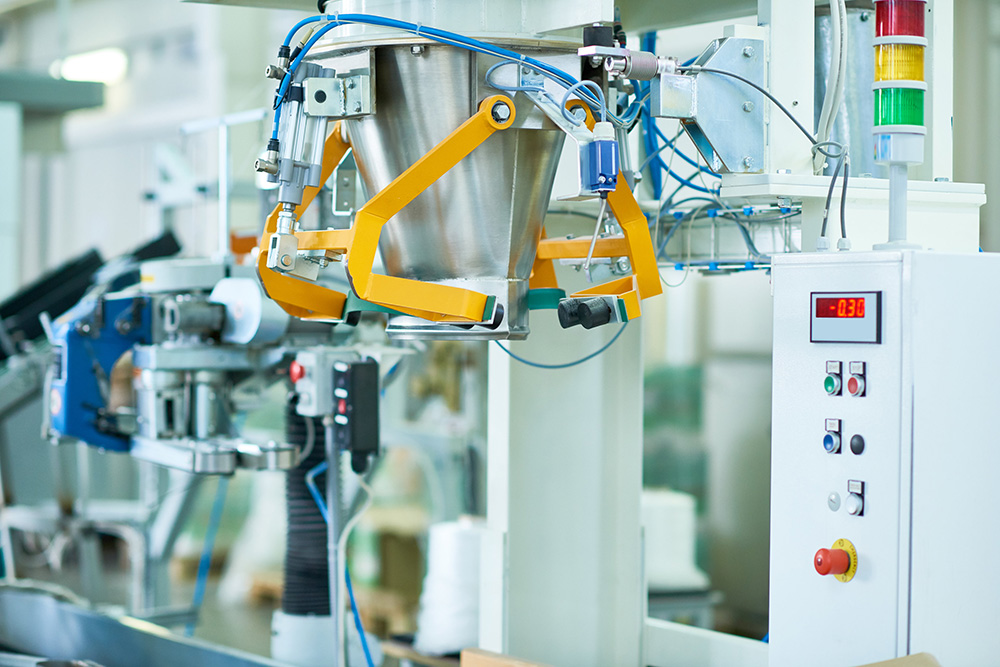Your cart is currently empty!
Plastic Pallets + Robots = Improved Productivity
Jim Hardisty, MD of Goplasticpallets.com, explains how together plastic pallets and robotic automation can help improve efficiency, consistency and productivity in the manufacturing sector.
Government measures to curb the COVID-19 pandemic have highlighted the fragility of our global supply chains. In the manufacturing sector certain industries, like construction and non-food retail, have been severally disrupted where the food and pharmaceutical industries are experiencing pressure like never before, as they strive to meet increased demand for their essential goods.
Those manufacturers that are diversifying and broadening their supply chains are likely to be the ones that come out on top post COVID-19. It is also anticipated that we will see closer controls and increased adoption of robotics.
According to NatWest, in the UK food and drink industry, a third of the workforce will be due to retire by 2024, leaving it approximately 140,000 people short. To plug the gap, the industry is reliant on innovative automation solutions, which have already been introduced for some aspects of food manufacturing.
Integrating automation into manufacturing operations has been on an upward trend in recent years as its benefits have become more widely recognised. Intelligent robotics, for instance, are transforming processes, altering the way that employees work in manufacturing environments. Where humans were once an integral part of the assembly line, we’re seeing their roles shift towards ensuring the smooth operation of automated processes – leaving automated equipment to handle the monotonous, and sometimes dangerous tasks. Reducing human contact with products, not only eradicates injuries and the chance of contamination but allows for more efficient, consistent production.
Advances in robotics, like improvements in sensing and gripping technology, also means that robots are now able to take care of even the most intricate and delicate of tasks which was once unthinkable.
In today’s highly automated manufacturing lines, robots are undoubtedly helping improve efficiency, consistency and productivity. These improvements, however, would not be possible without the use of reliable plastic pallets.

To properly understand the importance of plastic pallets, it helps to look at the history of the pallet and its integration with automation.
Pallets have played a significant role in the world economy since the 1920’s when the first ‘skid’ was introduced. A skid was a simple wooden surface upon which goods were piled and moved or wheeled from A to B. When the forklift truck was invented in 1915, skids were adapted to work with them. Ten years later then saw the first patent for a pallet by Howard T. Hallowell who named it a ‘Lift Truck Platform’.
During World War II, demand for pallets skyrocketed and this is when pallets really came into their own with the invention of the four-way wooden pallet. When mechanical palletizers came on the scene in the 1950s, the physical work of loading and unloading pallets was handed over to machinery. Where this greatly improved the efficiency and accuracy of palletizing goods, palletizers required products to be practically identical – and at this time pallets weren’t.
Industrial robots then appeared in the early 1960s, which saw robotic palletization taking up less space, becoming inherently reprogrammable and able to handle many different product types.
At around the same time, came the arrival of the first plastic pallet, which was first referenced in Modern Materials Handling Magazine in 1964, and it’s this innovation that has helped transform automation and robotic palletization as we know it today. It’s simply not possible to create wooden pallets that are completely uniform in size and weight. In contrast, plastic pallets are manufactured under extreme pressure in highly polished molds, which guarantees 100% size and weight consistency, meaning that they work seamlessly with robotic palletizers and other automated handling equipment.
In manufacturing environments, robotic automation requires a durable, hygienic and consistent platform to ensure the smooth and efficient picking and handling of goods, and this is where plastic pallets are indispensable. Where wooden pallets subjected to frequent use results in wear and tear – loose slats, broken nails etc. – that can disrupt production lines and cause untold damage to automated equipment, plastic pallets are designed to withstand frequent use, making them a reliable workhorse. Their consistent size and weight mean plastic pallets will reliably travel through an assembly line without causing disruption, sparing manufacturers the unnecessary expense and inconvenience of machine downtime and ultimately improving productivity.
Talk to a plastic pallet expert today about your automation requirements. Call us on +44 (0)1323 744057 or email sales@goplasticpallets.com.
